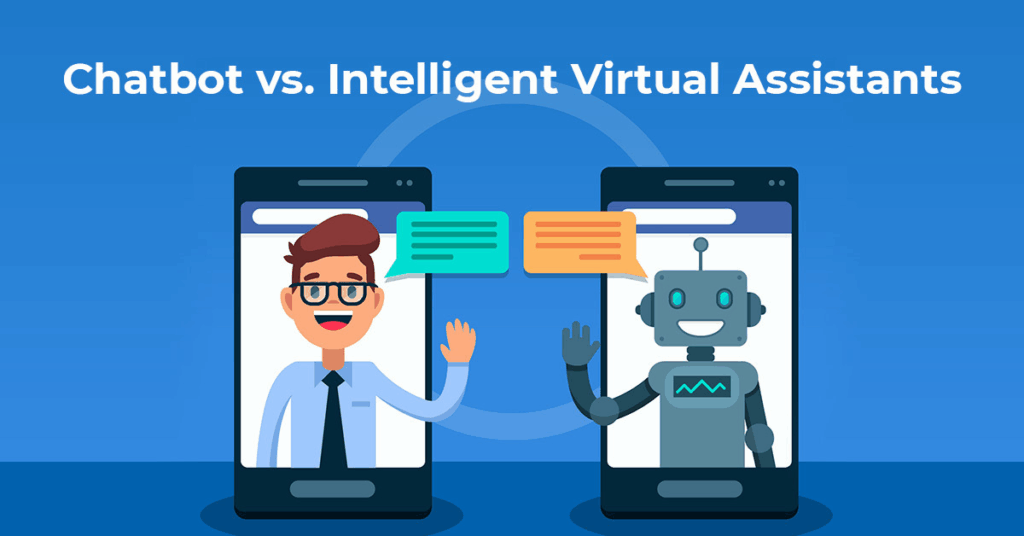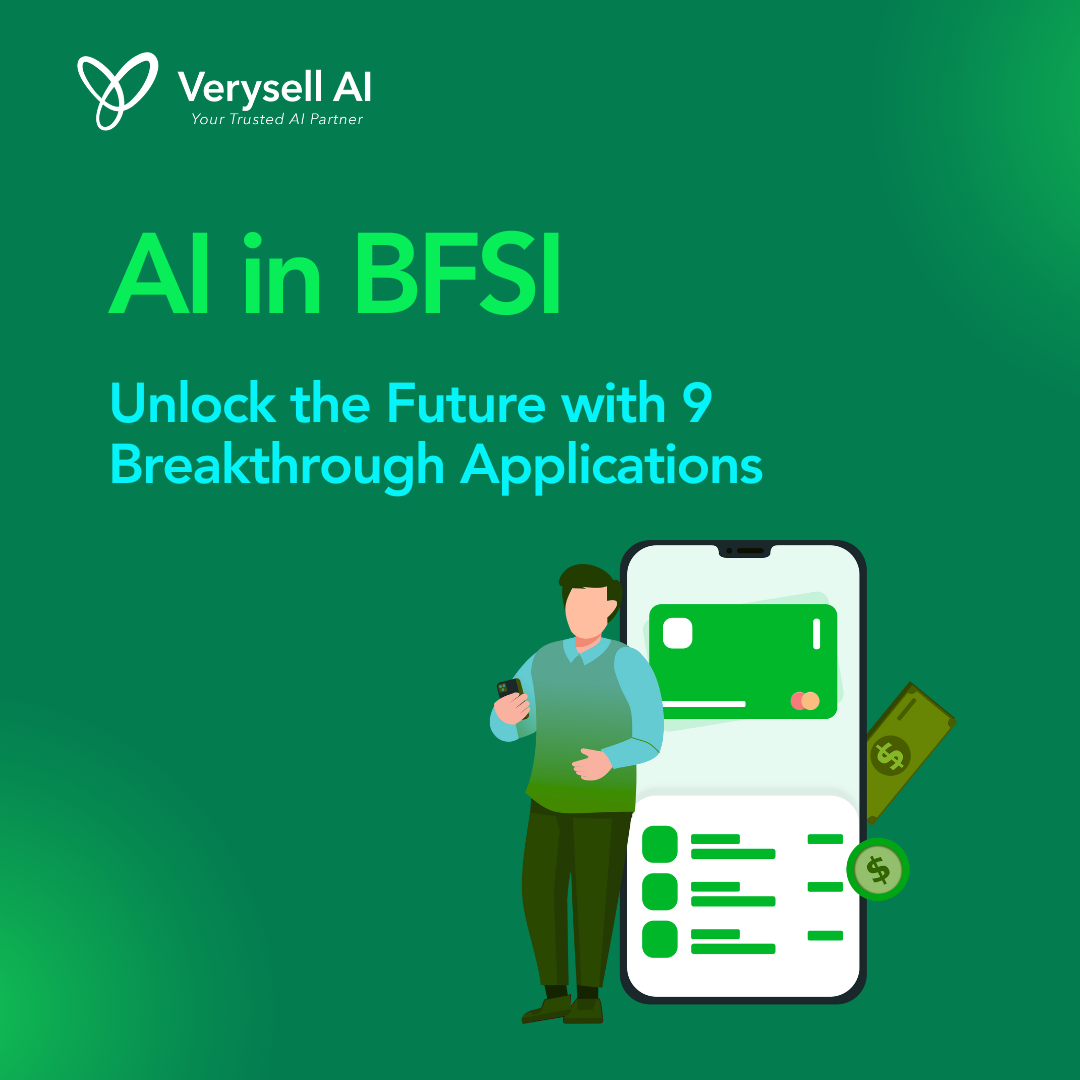AI in BFSI (Banking, Financial Services, and Insurance) industry is undergoing a significant transformation, AI technologies are enhancing operational efficiency, improving customer experiences, and enabling more informed decision-making across the sector. This article explores nine innovative applications of AI that are reshaping key areas such as fraud detection, risk assessment, customer service chatbots, personalized financial advice, regulatory compliance, algorithmic trading, claims processing automation, credit scoring, and market analysis. Each application demonstrates how AI is redefining the BFSI landscape, driving improved performance and customer satisfaction.

AI in BFSI Market
In the BFSI sector, AI refers to the combination of cutting-edge technology that help to simplify the different financial procedures. BFSI is an acronym for insurance, banking, and financial services. In the BFSI sector, AI is used in a variety of ways, including chatbots to assist and support customers, fraud detection algorithms, predictive analytics for risk assessment, and personalised financial status suggestions. It is expected to increase rapidly over the next few years due to its many advantages.
AI also aids in automating repetitive processes and lowering recurring mistakes, which improves the system’s overall cybersecurity. Additionally, back-office processes are being strengthened by AI-supported automation, which increases productivity and aids in the development of affordable solutions. AI is essential for detecting fraud and maintaining regulatory compliance in the management of risk and its consequences.
>> Read more: AI in BFSI State of Market Review
1. Fraud Detection and Prevention
AI algorithms analyze vast datasets to identify unusual patterns and detect fraudulent activities in real-time. By leveraging machine learning and behavioral analytics, financial institutions can proactively prevent fraud, reducing financial losses and enhancing customer trust. Additionally, these AI systems continuously learn from new data, improving their ability to recognize emerging fraud tactics and adapt to evolving threats. By integrating AI with existing security protocols, institutions can strengthen their defenses, ensuring a more robust approach to risk management. This proactive stance not only minimizes financial losses but also fosters a safer environment for customers, enhancing their overall confidence in the institution’s ability to protect their assets (Bas, 2024).

>> Explore more on our use case: Fraud detection in insurance
2. Personalised Customer Experiences
AI enables the delivery of tailored financial products and services by analyzing customer data and behavior. Chatbots and virtual assistants provide 24/7 support, while recommendation engines suggest relevant offerings, enhancing customer satisfaction and engagement. Moreover, AI-driven analytics help institutions segment their customer base, allowing for hyper-personalized marketing strategies that resonate with individual preferences. This targeted approach not only boosts customer retention but also drives cross-selling opportunities, as clients are more likely to engage with products that align with their specific financial needs and goals.
>> Read more on our blog post: AI-drive personalisation in insurance

3. Risk Management and Credit Scoring
AI models assess creditworthiness by evaluating a wide range of data points, including transaction history and social behavior. This leads to more accurate credit scoring and risk assessment, enabling institutions to make informed lending decisions and manage portfolios effectively. We invite you to look through our case study about credit risk system.

Additionally, by incorporating alternative data sources, AI models can provide insights into borrowers who may be overlooked by traditional credit scoring systems. This inclusivity allows financial institutions to expand their customer base while mitigating risk, ultimately fostering greater access to credit for underserved populations. Enhanced accuracy in credit assessments also leads to more competitive interest rates, benefiting both lenders and borrowers.
4. Process Automation
Robotic Process Automation (RPA) powered by AI automates repetitive tasks such as data entry, compliance checks, and document processing. This streamlines operations, reduces errors, and allows employees to focus on strategic initiatives. By integrating RPA with AI, organizations can achieve higher levels of efficiency and scalability, adapting quickly to changing demands. Th is transformation not only enhances productivity but also improves employee satisfaction, as workers can engage in more meaningful and creative tasks rather than mundane processes.

5. Investment and Wealth Management
AI-driven robo-advisors provide automated, algorithm-based financial planning services. They analyze market trends and individual risk profiles to offer investment recommendations, making wealth management more accessible and cost-effective. Furthermore, these robo-advisors continuously monitor portfolios, automatically rebalancing investments to align with changing market conditions and client goals. This dynamic approach ensures that clients benefit from timely adjustments, enhancing their overall investment performance while minimizing the need for constant oversight.

6. Regulatory Compliance and Reporting
AI assists in monitoring and ensuring adherence to regulatory requirements by automating compliance checks and generating accurate reports. This reduces the risk of non-compliance and associated penalties. Additionally, AI can quickly analyze vast amounts of data to identify potential compliance issues before they escalate, allowing organizations to take proactive measures. By streamlining compliance processes, AI not only saves time and resources but also enhances transparency and accountability within the organization. Ultimately, this leads to a more robust regulatory framework that benefits both insurers and their customers.

7. Cybersecurity Enhancement
AI strengthens cybersecurity by detecting and responding to threats in real-time. Machine learning models identify anomalies and potential breaches, enabling swift action to protect sensitive financial data. Furthermore, AI-powered systems continuously learn from emerging threats, improving their detection capabilities over time. This proactive approach not only reduces the risk of data breaches but also enhances overall security protocols, allowing organizations to maintain customer trust and comply with regulatory requirements. By integrating AI into cybersecurity strategies, financial institutions can create a more resilient defense against evolving cyber threats.

8. Algorithmic Trading
AI-powered trading systems execute trades at high speeds and volumes, analyzing market data to make informed decisions. This enhances trading efficiency and can lead to better investment outcomes. In addition, these systems can leverage advanced algorithms to identify patterns and trends in real time, allowing traders to capitalize on fleeting market opportunities. By minimizing human error and emotion in trading decisions, AI-powered systems can optimize portfolio performance and reduce risks, ultimately empowering investors to achieve their financial goals more effectively.

9. Customer Service Optimisation
AI chatbots and virtual assistants handle customer inquiries efficiently, providing instant responses and freeing up human agents for more complex issues. This improves customer satisfaction and reduces operational costs. Moreover, these AI-driven tools can analyze customer interactions to identify recurring issues, enabling organizations to enhance their services and tailor responses to specific needs.

By offering 24/7 support, chatbots ensure that customers receive assistance anytime, leading to increased loyalty and engagement. This not only streamlines operations but also allows businesses to scale their customer service capabilities without a proportional increase in costs.
Conclusion
Artificial Intelligence is revolutionizing the BFSI sector by enhancing fraud detection, personalizing customer experiences, improving risk management, and streamlining operations. As financial institutions continue to embrace AI technologies, they must address associated challenges to fully realize the potential benefits. Strategic implementation and continuous innovation will be key to leveraging AI for sustained growth and customer satisfaction in the BFSI industry.
Further Reading:


